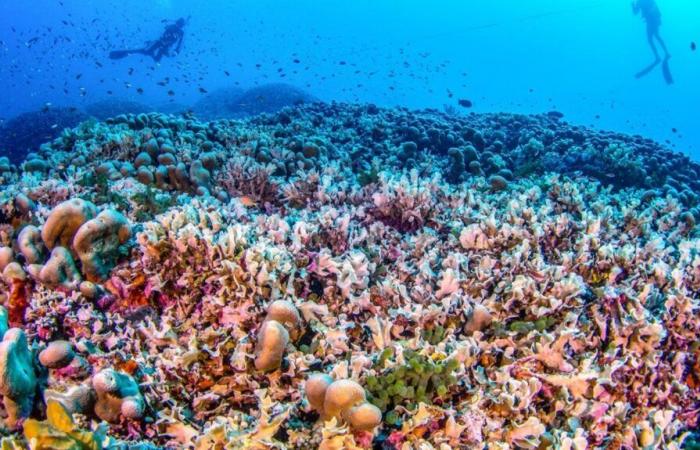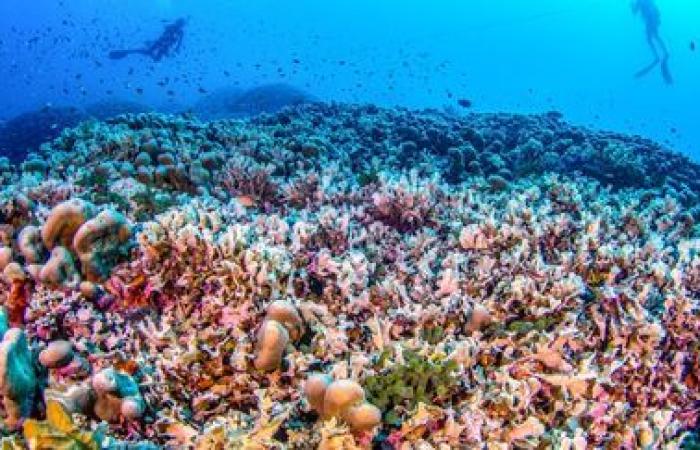The coral discovered in the Solomon Islands measures 34 by 32 meters. It has been there for three centuries and is resisting the climate crisis.
Published on 15/11/2024 08:01
Updated on 15/11/2024 08:14
Reading time: 2min
A giant hidden beneath the waters, scientists from the National Geographic Society have just discovered the world's largest coral in the Solomon Islands, in the Pacific. Photos of this discovery were published Thursday, November 14. From the surface, it is a large shadow in the turquoise ocean, but underwater divers discovered an exceptional coral measuring 34 by 32 meters, larger than a blue whale. Don't imagine a forest of colors, but rather a gigantic rock, mostly brown with a few touches of red, pink and blue.
This coral is three times larger than the previous record in Samoa. It has a billion polyps, tiny organisms connected in a network. They are what make up the corals. This underwater wonder is 300 years old, making it roughly the same age as Louis XV. He has seen the industrial revolution, two world wars, the advent of the internet and even Covid.
Today, he faces climate change which is causing great harm to corals. Three quarters of reefs are affected by bleaching, that is to say the polyps die. They are eaten away by warmer oceans, which also become more acidic by absorbing CO2. Our giant coral is holding up well, because it is a little deeper than average and therefore in cooler waters. “A pillar of life still there!”, rejoice the scientists who discovered it. It is above all an encouraging sign. Proof that such an organism can resist, so far in any case, the climate crisis.
The National Geographic Society team sees it as a symbol of the mysteries of nature still to be elucidated. This coral has been there for three centuries, under the noses of local populations, but the inhabitants of the area undoubtedly took it for a large rock. Without diving equipment, they did not approach him. Enough to remind us of the many discoveries still ahead of us. Scientists have documented two million living species across the world. According to estimates, there remain at least 8 million to be discovered.







